All Rights Reserved, 2000 - 2017
Created by:
Torrence Royer
Comments are welcome.
Please leave a note in the public GUEST BOOK
or send a private Email to:
Barghash@msn.com
Palatial Zanzibar
Many
people
regard
Palaces
as
extravagances
of
the
past,
evidence
of
the
profligate
spending
and
extravagant life styles of the rulers at the expense of the ruled.
Others
feel
that
such
stately
buildings
are
repositories
of
the
historic
identity
of
a
culture,
symbolic
of
those who built them, and as such deserve respect and even veneration.
Whatever
one's
opinion,
it
seems
clear
that
many
cultures
reached
a
stage
in
their
history
that
resulted
in
the
creation
of
Palaces,
the
Zanzibari
culture
was
no
exce
ption.
The
following
information,
about
12
of
the existing and ruined palaces in Zanzibar, can illustrate that history and culture.
The home of the last King of the Shirazi people. The Mwinyi Mkuu, "The Great Owner."
For a short time the Mwinyi Mkuu lived in this Palace, located in the interior of the main island, and ruled the Eastern and Southern parts of Unguju. This while the new Omani/Zanzibari Sultans began to build their Palaces along the Isle’s western shore. He died in 1865. His only son was young and ill and did not long survive. With the boy dead the ruling-line died out and the Palace was left to crumble. Excavations have uncovered human skeletons within the palace ruins, leading to rumors that the site was haunted by the spirits of the dead. A magnificent set set of huge ceremonial drums were also discovered within the ruins. Recently the old walls have been restored and Dunga Palace may now be visited as a historic site, but only with a guide and for a small fee.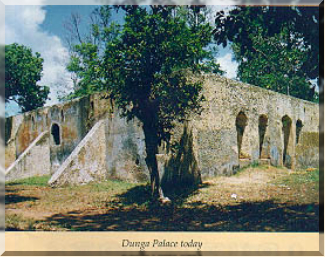
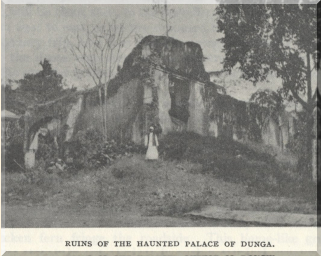
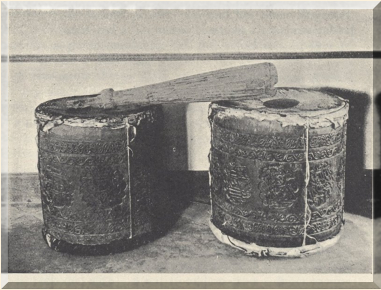
Mtoni Palace
Mtoni Palace was built by the founding Sultan of the Al Busadi dynasty, Seyyid Said bin Sultan.
The oldest Palaces on Zanzibar were primarily residential structures. They rambled on into many
rooms and at times even connected to neighboring buildings. These family-Palaces could be quite
large and would house as many as 1000 people.
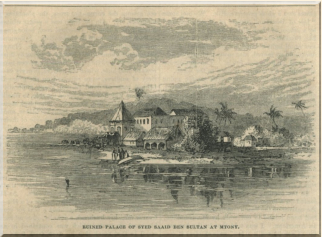
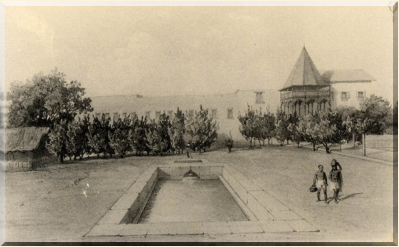
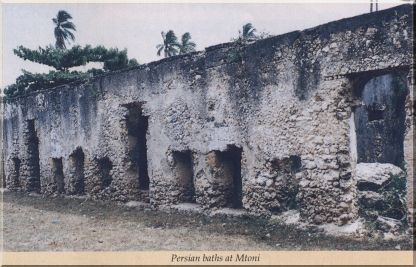
Mtoni Palace was described by one visitor as follows:
"A door to the main house opened to the entrance porch and then led to the central part of the
house which was the audience chamber decorated with long mirrors. The living quarters were
on the upper floor. In front of the house was a circular tower.... The upper part of the tower
was used as a veranda and had a polygon balcony. The tower was crowned with a conical roof
like a tent."

Beit El-Hukm Palace
“The "House of Government"
Later Palaces began to specialize; some became more office than home. The Beit el-Hukm was one such
structure. It was located between Beit el-Sahel on one side, and the House of Wonders on the other.
These three buildings were connected with elevated and covered walkways.
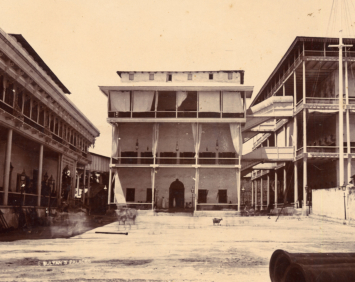
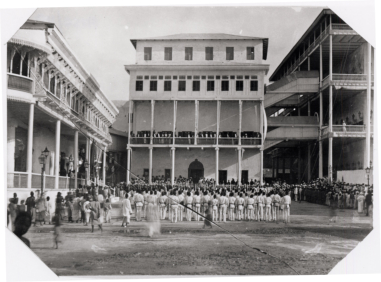
Beit el-Sahel
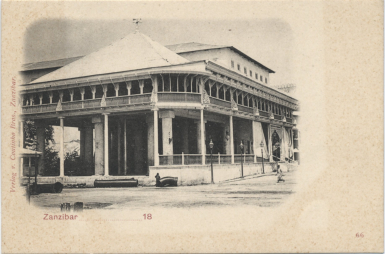
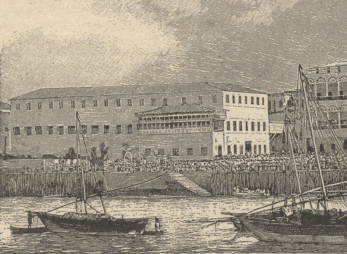
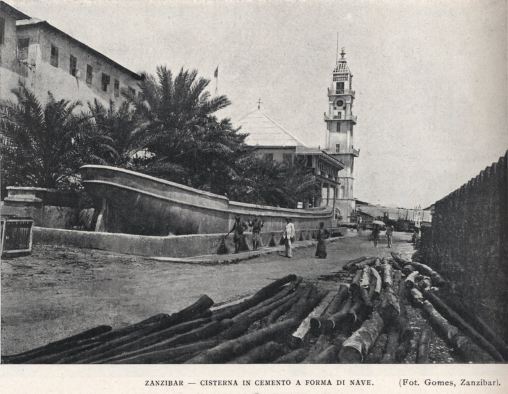
Seyyida Salme, Princess of Zanzibar and Oman, had this to say of life in this Palace:
"There
is
a
splendid
view
of
the
sea....
The
doors
on
the
upper
floor,
which
contained
many
rooms,
open
upon
a
long
and
wide
gallery
of
such
grandness
as
I
have
never
seen
equaled.
The
ceiling
is
supported
by
pillars....
and
these
pillars
are
connected
by
a
high
parapet,
along
which
chairs
are
placed.
A
great
many
coloured
lamps,
suspended
from the ceiling, throw a magic glow over the whole house after dark.
The
gallery
looks
down
upon
a
courtyard,
always
full
of
bustle
and
noise.
...
Two
large
separate
flights
of
stairs
lead
from
this
court
to
the
rooms
on
the
first
floor.
Crowds
of
people
are
continually
going
up
and
down
these
stairs,
and
the
crowding
is
often
so
great that it takes some minutes before one can get to the staircase at all."
This Palace was virtually destroyed in the 1896 war but the remaining walls on the north side were
incorporated into a reconstructed Palace which was again modified in 1936.
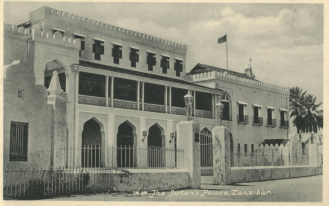
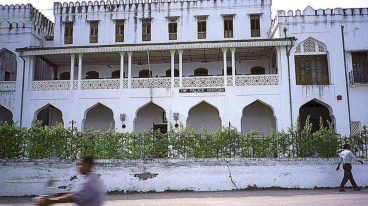
The House on the Cape.
Beit el-Ras Palace
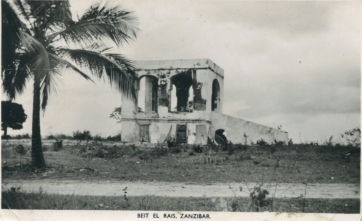
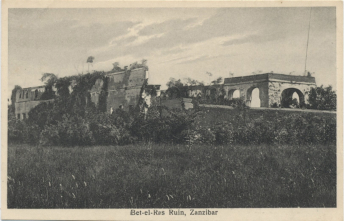
For years, all that remained of this proto-Palace was the immense elevated north Porch. Imagine the
wonderful views of the sea from this Palace that never existed.
"... begun in 1847 by Seyyid Said, Persian builders being employed." On his death,
however, the building was still unfinished .... his successor refused to complete it. The
adjourning walls were broken down and the debris used in connection with the building
of the Bububu Railway,..."
Marhubi Palace
Another residential Palace, just north of Stone Town. This was the home of Seyyid Barghash.
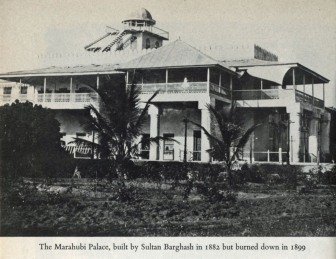
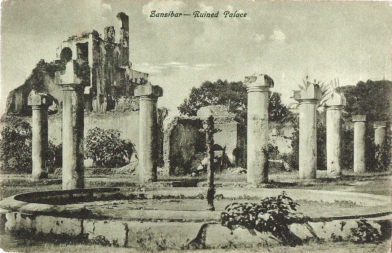
The cooling pool that the Sultan built
in the 1800’s still holds water today.
Kibweni Palace
Another
type
of
Palace
prevalent
on
Zanzibar
were
the
country-Palaces.
These
were
used
to
escape
the
hustle and bustle of the city.
These were also usually constructed at sites believed to impart health benefits.
Kibweni Palace is a wonderful example of this type of Palace.
Constructed
in
1915
the
structure
was
originally
named
Beit
el-Kassrusaada
(Palace
of
Happiness)
but
that
name
fell
into
disuse
and
it
is
now
universally
referred
to
by
the
name
of
the
village
near
where
it
is
located, just north of the ruins of Beit el-Ras.
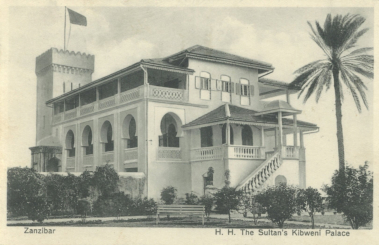
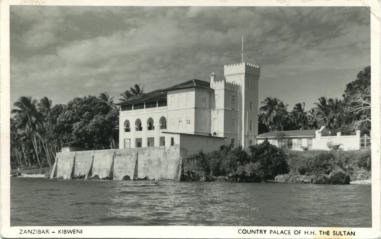
Chukwani Palace
Once
located
near
the
village
of
Fumba,
about
15
kilometers
south
of
Stone
town.
This
country-palace
displayed
a
modest
beach
house
facade
when
approached
from
the
land
side.
However,
behind
the
house lay an extensive estate, perched on a bluff with walkways that invited visitors toward the sea.
This Palace was used as a health spa until it was demolished.
The
Palace
bath-house
is
said
to
still
exist,
but
the
site
cannot
be
visited
because
it
is
now
part
of
a
military preserve.
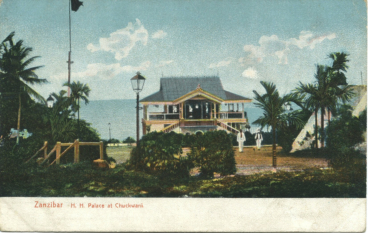
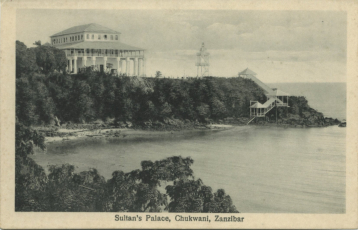
Chuini Palace
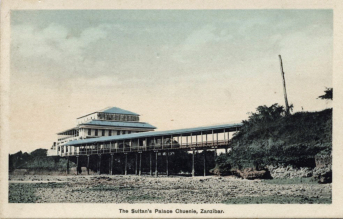
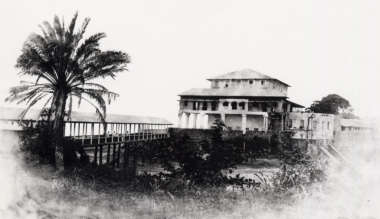
Little
remains
of
this
ingenious
Palace
that
was
designed
to
have
running
water
in
a
time
before
electricity.
It
was
constructed
near
the
shore
and
next
to
a
stream,
in
a
location
in
northwest
Zanzibar
that was referred to as ‘the place of the leopard.
"The
Palace,
which
was
built
in
1872
by
Seyyid
Barghash
stands
in
a
river
bed,
a
costly
artificial
foundation
having
been
constructed
with
the
object
of
keeping
the
building
low
so
that
an
adequate
flow
of
water
should
be
obtained.
The
approach
was
by
a
covered
way
carried
on
tall
iron
pillars
over
the
adjoining
creek,
beneath
which
the
sea
came
into
the
creek
behind.
The
building
was
burnt
down
in
1914
and
little
of
interest
remains
except
the
long
series
of
bathrooms
through
which
a
stream
of
water ran to the sea."
The Peoples Palace
It was here that Seyyid Barghash built the great boat-cistern to
hold the water needed by the many occupants of this house.
Formerly the British Counsel’s Residence, this building is an example of English ‘Saracen’ architecture.
Located on the south edge of the city, near the hospital, this Palace today serves as the Presidential
Residence for the leader of the Zanzibar government.
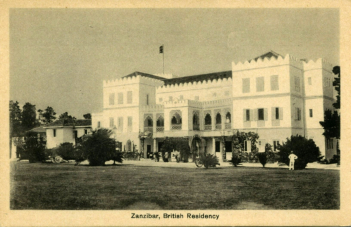
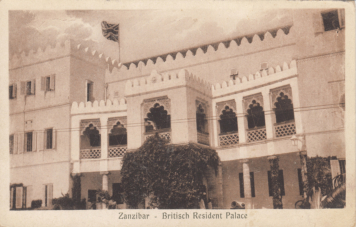
Some of the most
interesting features
are on the back of
the building.
Access to this site
however, is strictly
controlled.
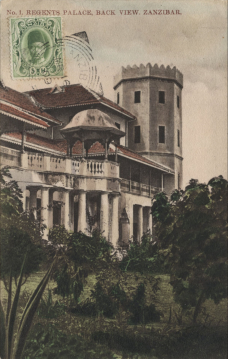
Beit el-Ajaib - House of Wonders
Whatever their other functions all Palaces are also built to enhance the status of their owner.
The foremost Zanzibar example of this fact is the famous House of Wonders.
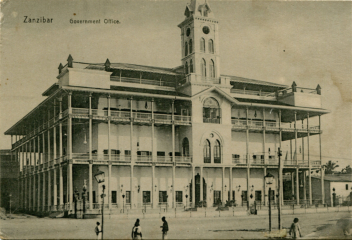
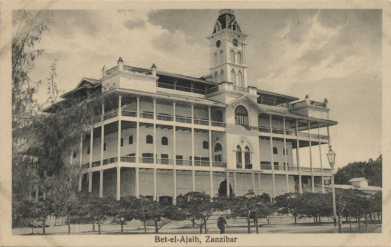
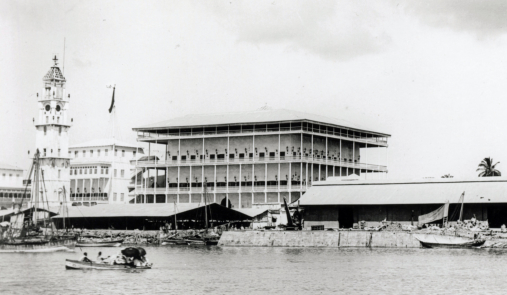
The
House
of
Wonders
didn't
present
such
a
stately
appearance
when
first
built,
it
looked
perhaps
a
bit
squat
in
those
days.
However,
damage
done
to
the
building
during
the
1896
war
required
extensive
repairs
and
because
the
beautiful
clock
tower/light
house
in
front
of
the
Palace
had
also
been
destroyed
in
the
war,
it
was
decided
to
combine
projects
and
incorporate
a
new
clock-tower
into
the repaired Palace The result is a truly remarkable building that is now more than 125 years old.
Dunga Palace
Originally just a large rectangular building, in the 1870's an ornate 'Sultan's Pavilion' was added on the
west side.
This building housed more women than men and was therefore sometimes referred to as 'the Harem.'
That modified Palace became the modest harbor side town-home of Seyyid Khalifa, until 1960.
During
his
many
years,
it
was
simply
known
as
the
'Sultans
Palace’.
After
the
1964
revolution,
this
structure
was
used
as
a
government
headquarters.
Later
it
was
renovated
and
has
reopened
as
a
nice museu
m.





Palace Museum


























































